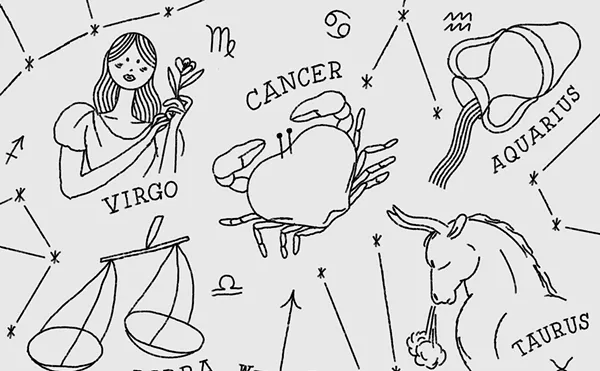
Audio By Carbonatix
[
{
"name": "GPT - Leaderboard - Inline - Content",
"component": "35519556",
"insertPoint": "5th",
"startingPoint": "3",
"requiredCountToDisplay": "3",
"maxInsertions": 100,
"adList": [
{
"adPreset": "LeaderboardInline"
}
]
}
]
John Sayles was an independent filmmaker before independent films were cool and he remains one even now, when they — at least as a concept — have gone stale. It’s not a matter of trends with this guy; he was staking out the territory before the product had an audience.
Sayles began his creative career as an actor and then a novelist, and his early desire for independence no doubt came from the realization that if he were to have as much control over his movies as he did his books it was best to aim for minimum interference. His earliest films give him credit as having “written, directed and edited” them, and you can imagine him being hands-on until the end, snipping and joining the moments which best serve his stories.
Shades, then, of such triple-threat mavericks as Sam Fuller and Ed Wood, who were also writers and storytellers first, cinematic marvels second. But where Fuller’s movies reflected his background in savoring-the-unsavory journalism and Woods’ arose from a delirious mix of booze and naïveté, Sayles’ authorial ambitions were made of sturdier stuff, reflecting a sensitivity that was both more respectable and more conventionally talented. Fortunately, even a novelist who is only very good can be an extraordinary filmmaker, since the common virtues of a good novel — the deft handling of many characters, emotional nuance, dialogue that reveals character — are rare qualities to come across in a movie. And although Sayles the screenwriter apprenticed in the Roger Corman genre factory (Piranha and Alligator are two of his juicier credits), Sayles the writer-director is a continuation of Sayles the novelist, a point often made (or inferred) by both his admirers and detractors.
Four of Sayles’ first five films are being shown this weekend at the Detroit Film Theatre as part of its Independent Vision weekend. (The missing film is his third, Baby It’s You, 1984, which was taken out of his hands at some crucial endpoint in its creation, thus strengthening his resolve to remain independent.) I haven’t seen his first film, Return of the Secaucus Seven (1980) and so can only pass on the received consensus that it’s an impressive debut, similar to but different from The Big Chill (1984), evincing an early mastery of the multicharacter milieu and, of course, cogent but unaffected dialogue. I have seen his second, Lianna (1983), and 18 years later remember it as being an unsensational story about a woman, in the throes of a bad divorce, discovering her lesbian nature — which sounds like some kind of soggy Lifetime Channel nightmare but which is handled not so much with taste (which would elide or sentimentalize the emotionally messy bits) as with compassion (which doesn’t).
Fresher in the memory, The Brother From Another Planet (1984, and the first Sayles film to get something resembling a wide release, at least art-house-wise) is more fable than sci-fi, with the title character wandering through Harlem a wide-eyed observer, literally mute, whose childlike demeanor encourages people to confide in him. Largely anecdotal, the film benefits greatly from a beguiling central performance by Joe Morton and the audacious way Sayles ups the ante when he shifts from the ruefully comic to the genuinely tragic.
Matewan (1987) is Sayles’ first nearly perfect film. Set in a West Virginia coal mining town in the ’20s, its tale of attempted unionization and the ensuing violence manages to have two really nasty villains and two courageous heroes, and still suggest the ambiguity of the struggle — not in the matter of who’s right and who’s wrong, but in the way that the price of apparent justice is a bitter taste in everybody’s mouth. Even the well-meaning and committed union organizer (Chris Cooper) is alert to the moral quandaries of the situation. When one of the miners, an Italian immigrant, points out to him that if he joins the union someone from the mining company will shoot him and if he doesn’t one of the union miners will probably shoot him, Cooper pauses to consider this and then says, with sincerity, “Well, that’s one way of looking at it.” For a polemic, this is richly woven stuff.
Matewan is a transitional film, the point where Sayles the director begins to catch up with Sayles the writer, the precedent for later, more fully realized works such as Lone Star (1996) and Limbo (1999). And since Sayles has stated that he’s more interested in making films about people than he is in making “cinematic art” — no art-for-art’s-sake for him — one must assume that his evolution from diamond in the rough to gifted filmmaker is just a side effect of his pursuit of independence. Driven to take control by a desire to maintain his personal vision, he’s become a cinematic artist despite his best intentions.
Showing exclusively at the Detroit Film Theatre (inside the DIA, 5200 Woodward Ave., Detroit): Friday, 7 p.m., The Brother From Another Planet (in the presence of John Sayles); Saturday, 4 p.m., Matewan; Saturday, 7 p.m., Return of the Secaucus Seven; Saturday, 9:30 p.m., Lianna. Call 313-833-3237.
Richard C. Walls writes about the arts for Metro Times. E-mail him at letters@metrotimes.com.





